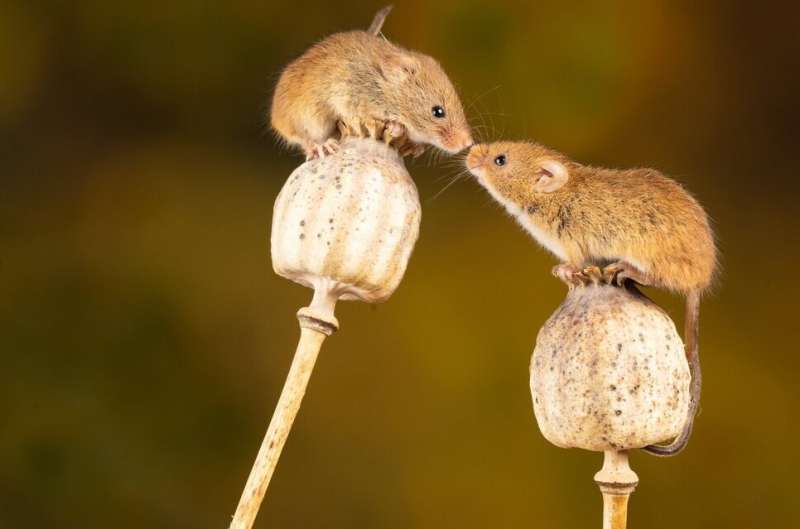Fast changing smells can teach mice about space

Researchers at the Francis Crick Institute and UCL (University College London) have found that mice can sense extremely fast and subtle changes in the structure of odors and use this to guide their behavior. The findings, published in Nature today, alter the current view on how odors are detected and processed in the mammalian brain.
Odor plumes, like the steam off a hot cup of coffee, are complex and often turbulent structures, and can convey meaningful information about an animal's surroundings, like the movements of a predator or the location of food sources. But it has previously been assumed that mammalian brains can't fully process these temporal changes in smell because they happen so rapidly, much faster than an animal can sniff.
Using behavioral experiments where mice were exposed to incredibly short bursts of odor, neural imaging, electrophysiology and computer models, the scientists found that mice can, in fact, detect very rapid fluctuations within odor plumes, at rates previously not thought possible. They also showed that mice can use this information to distinguish whether odors are coming from the same or different sources, even if they are very close to each other.
This suggests that the mammalian olfactory system, responsible for the sense of smell, is also key in processing the awareness of physical space and surroundings, guiding decisions important to survival.
Andreas Schaefer, senior author and group leader of the Sensory Circuits and Neurotechnology Laboratory at the Crick and Professor of Neuroscience at UCL says: "From an evolutionary point of view our findings make sense as they help to explain why there is a lot of computational power within the olfactory bulb, the part of the brain where the nose sends signals to. It isn't just processing chemicals from odors but can also calculate information about physical distance and source. It would have been odd for evolution to create such processing power in this part of the brain if it were not being used to help the species survive."
In one key experiment, the scientists trained mice to detect whether two odors were coming from the same source or separate sources. The mice were able to correctly distinguish this difference even when the odors were released in short blips, lasting only a 40th of a second each (40 Hz).
Tobias Ackels, postdoc in the Sensory Circuits and Neurotechnology Laboratory at the Crick says: "Previous research into the sense of smell was done on the assumption that mice couldn't distinguish the fine, fluctuating information in odor plumes.
"We've shown that mice can access and process this information—this opens up a new dimension for studying the brain; we can run experiments that more effectively trigger neurons in a natural way and challenge the olfactory bulb. This will allow us to find out more about how this part of the brain works and how information about the world is extracted by neural circuits."
As part of the study, the scientists designed new technologies including a high speed odor delivery device and equipment that can measure several odors simultaneously with extremely high precision.
These innovations will enable more sophisticated work on the olfactory bulb, increasing our knowledge of how this brain region processes information about the environment and influences behavior. Ultimately, the team aim to build understanding of how sensory circuits link the external world with internal thought and action.
More information: Ackels, T., Erskine, A., Dasgupta, D. et al. Fast odour dynamics are encoded in the olfactory system and guide behaviour. Nature (2021). doi.org/10.1038/s41586-021-03514-2
Journal information: Nature
Provided by The Francis Crick Institute



















